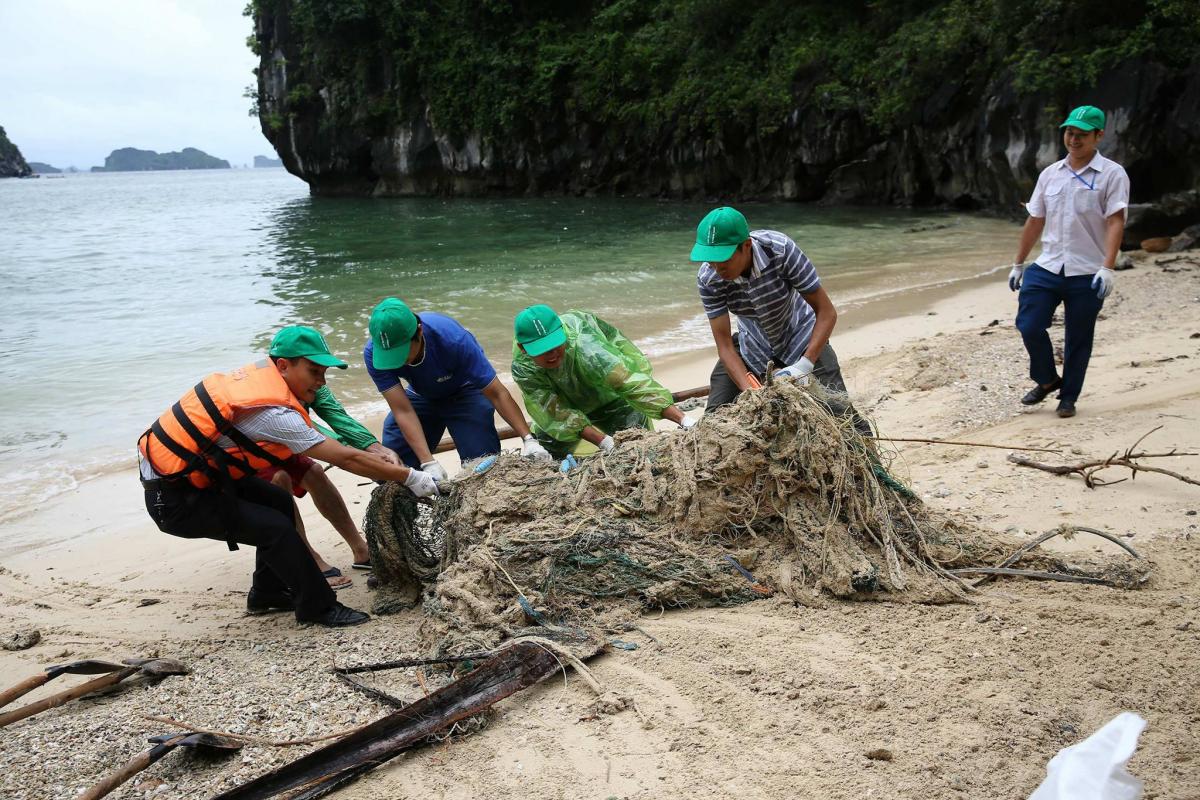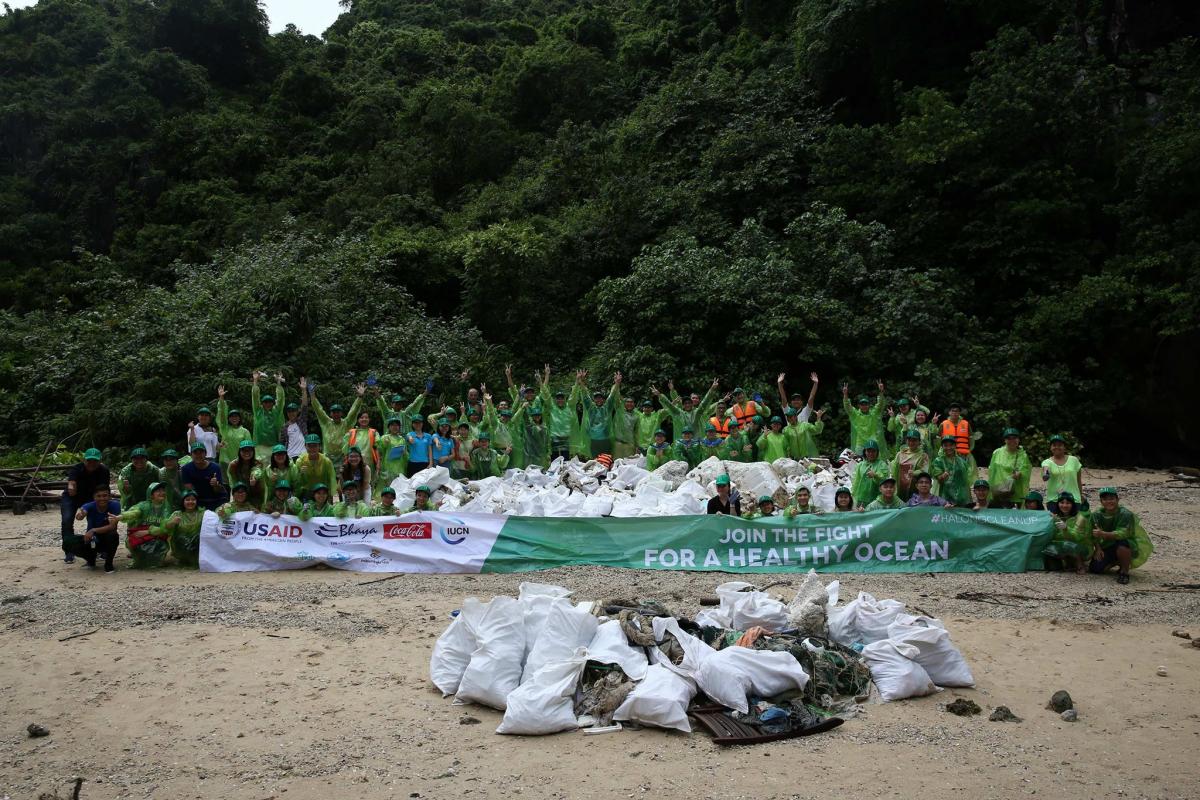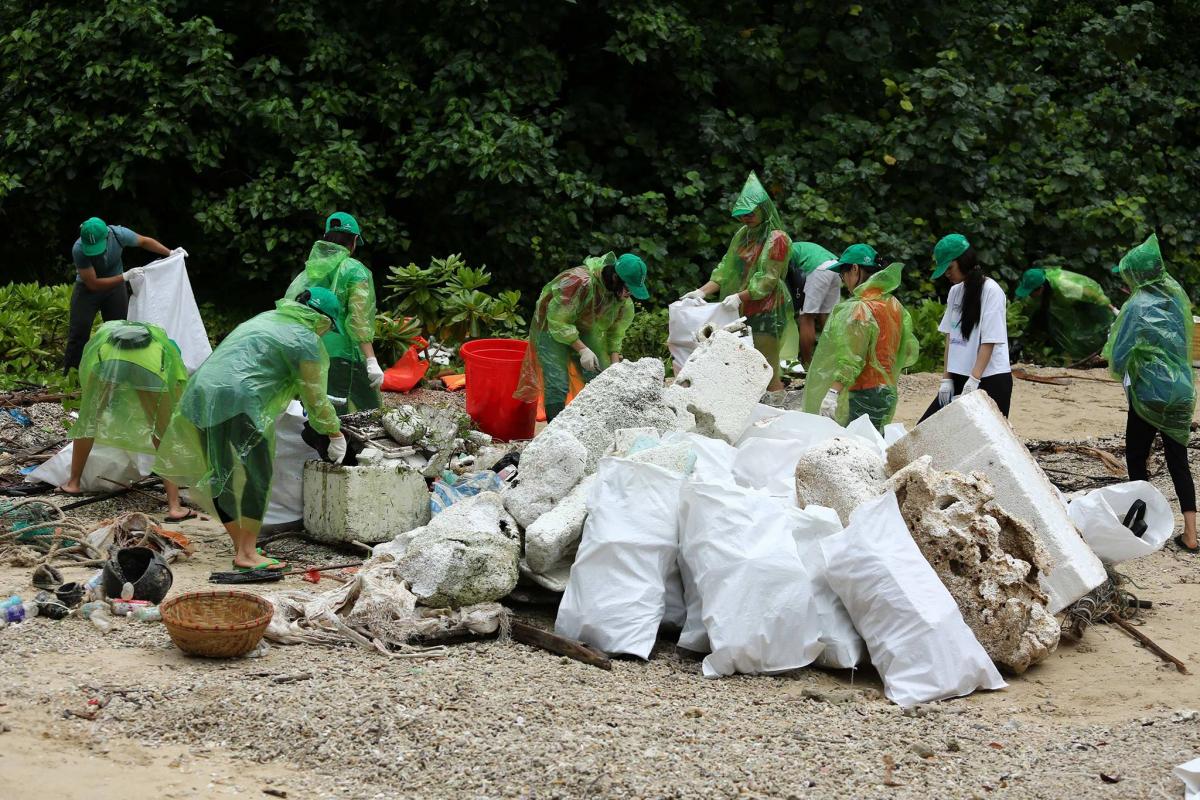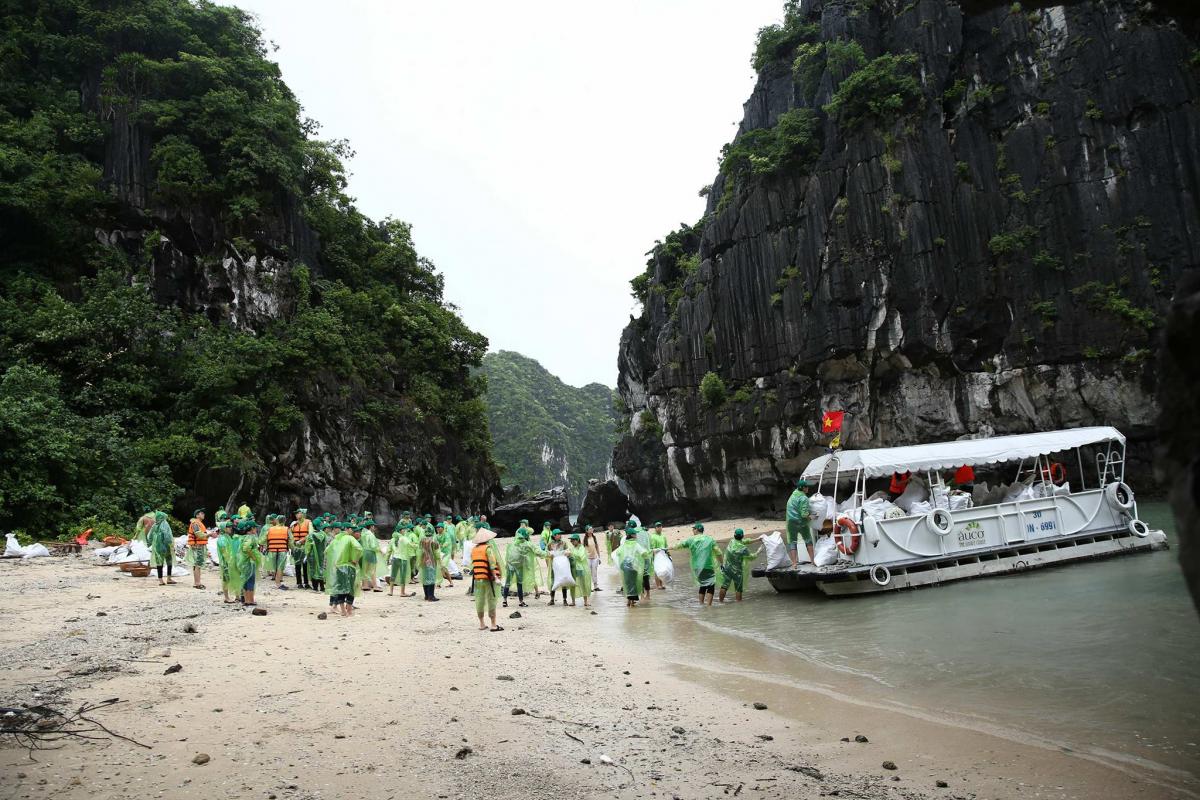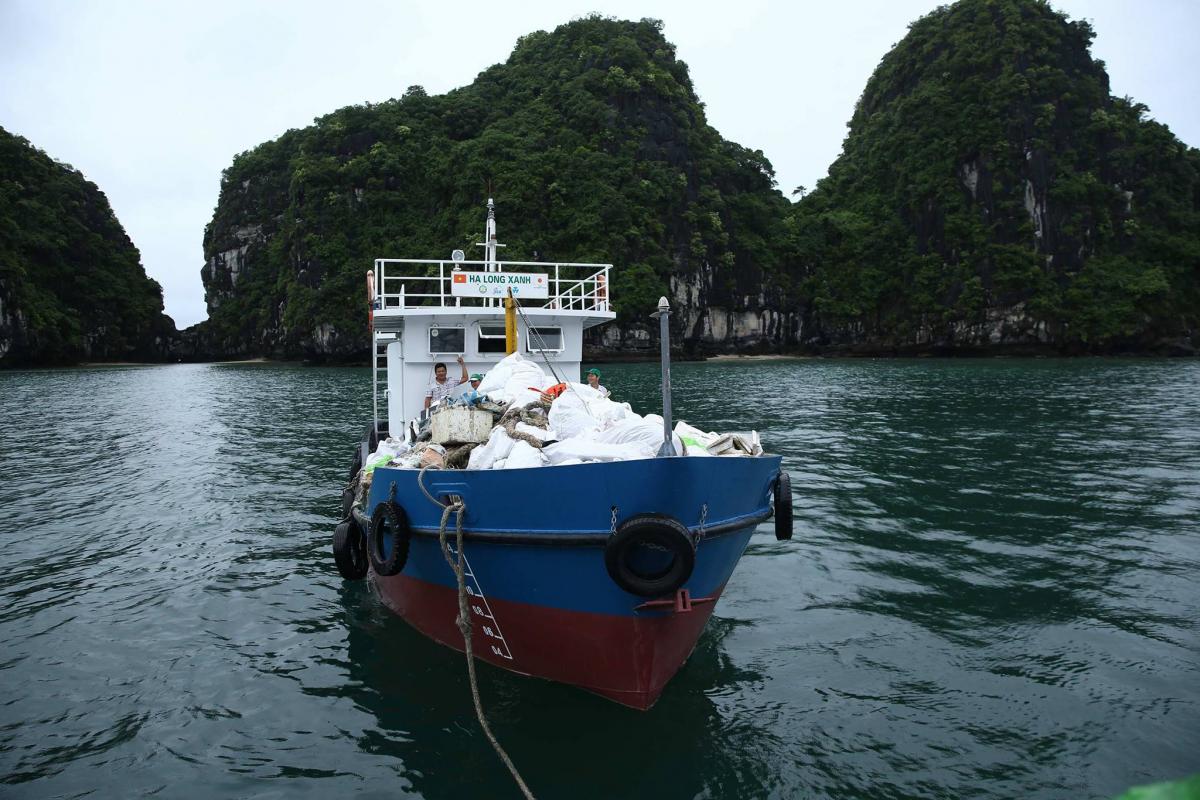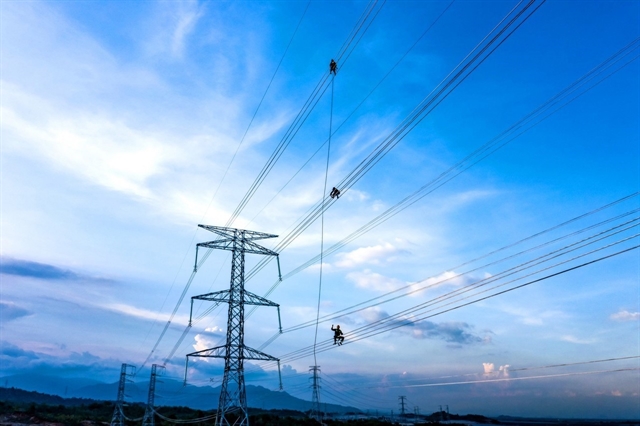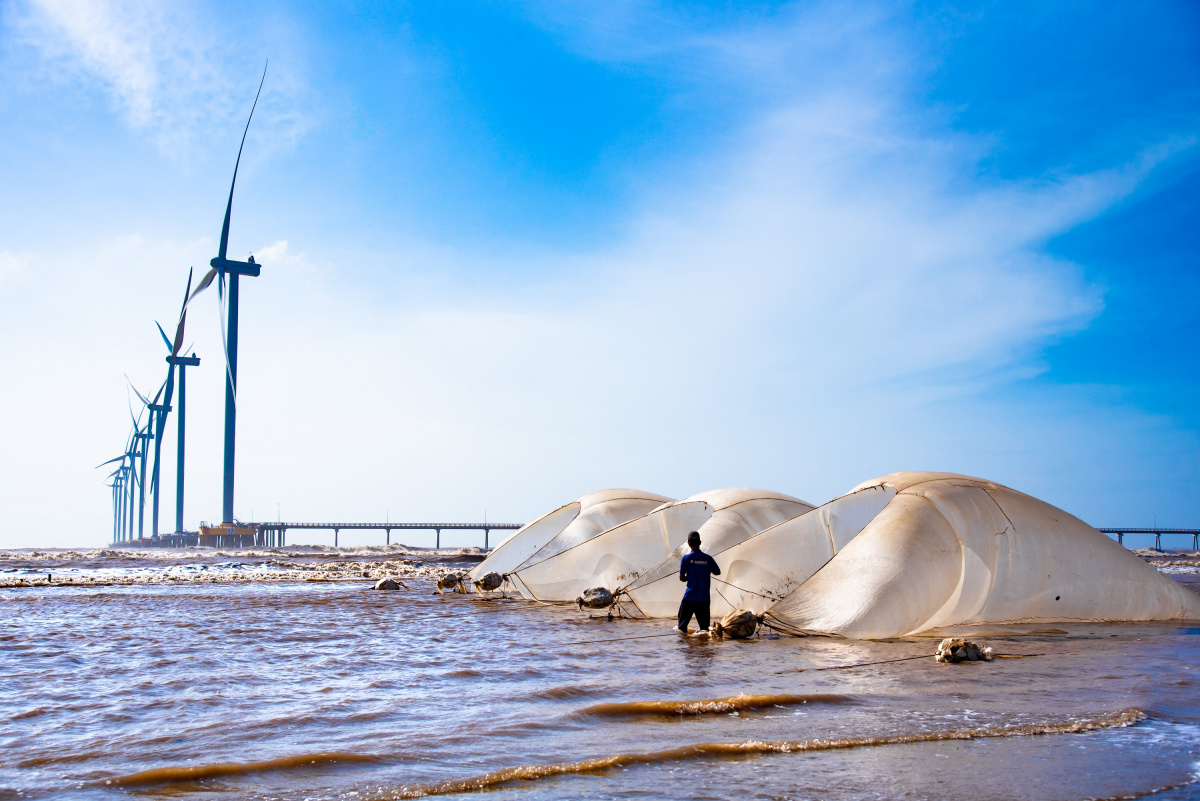More action needed from Hai Phong City to control polystyrene pollution in Ha Long Bay-Cat Ba Archipelago
"Beautiful, totally worth it, shame about the litter. We thoroughly enjoyed our overnight cruise in Ha Long Bay and would recommend this experience. The only detractor was seeing litter in the water in the area where we went kayaking. Apparently, it's been cleaned up a lot in recent years but it's a real shame that there are still plastic wrappers, bags and bottles, etc. being disposed of thoughtlessly in this amazing place.” TripAdvisor commented on a visit to Ha Long Bay in May 2016. This is just one of the many comments on pollution in the bay.
On August 30-31, IUCN and partners organized the third coastal clean-up on four small islands in Hang Trai: Ang Du, Hai Cua, Cay Bang, and Hon Cua Kenh. With the enthusiastic participation of more than 100 volunteers, and despite heavy rain, 2.4 tons of trash was collected from 1.7 km of beach.
Polystyrene, which disintegrates into tiny plastic pellets, made up 80% of the trash we collected, a proportion that has increased since the first two clean-ups in June 2016 and January 2017.
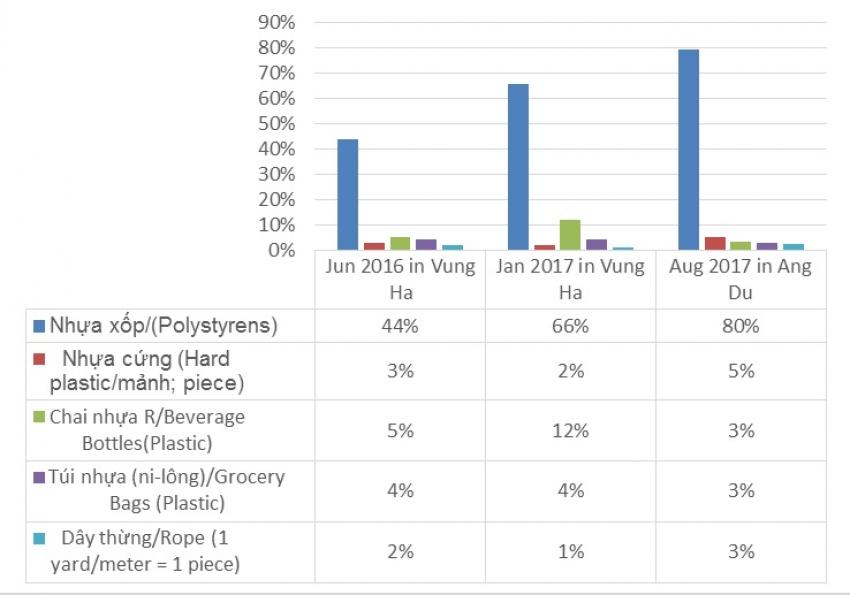 Photo: Graph shows the types of trash collected in three coastal cleanups © IUCN Viet Nam
Photo: Graph shows the types of trash collected in three coastal cleanups © IUCN Viet Nam
“This is the third time I’ve participated in the coastal clean-up organised by IUCN and I am surprised with the huge amount of polysterenes. It has not declined but gotten even wrose,” said by Ms. Nguyen Lan Huong, a volunteer and member of OceanSaver network.
After the first coastal clean-up, the Ha Long City People’s Committee issued Decision No. 349/TB-UBND banning the use of polystyrene in floating structures in Ha Long Bay.
“The Decision has been strictly enforced by the local authorities of Ha Long City. Currently, there are 55 floating structures in Ha Long Bay. Since the promulgation, 50% of individuals/households providing aquaculture and tourism services have replaced polystyrenes with sustainable materials. 3,520 out of 4,141 buoyancies have used composite barrels instead of styrofoam. This shows the strong commitment of the Ha Long City People’s Committee,” said Pham Dinh Huynh, Deputy Director of Ha Long Bay Management Board.
So why does the amount of polystyrenes keep increasing?
Hang Trai area is on the boundary between Hai Phong and Quang Ninh and is adjacent to Lan Ha Bay in Cat Ba’s Cat Hai District. While Quang Ninh has acted to control polystyrene, floating farms in Lan Ha Bay continue to use polystyrene for buoyancy. So action by Quang Ninh alone can’t solve the problem.
Cat Hai District People’s Committee has a plan to reduce the number of floating farms to 150 by 2020 and ensure that these farms meet certain environmental standards to be allowed to operate. It is vital that Hai Phong, like Quang Ninh, bans the use of polystyrene in flotation devices. At the same time, more effort should be made to raise awareness of fishing communities and start to replace polystyrene with environmentally friendly materials.
The third coastal clean-up was an activity of the USAID-funded Ha Long-Cat Ba Alliance. It was organized in partnership with Alliance members and partners including Bhaya Group, GreenHub, Live & Learn, and Coca-Cola Beverage Viet Nam Ltd. Data from the clean-up were submitted to the International Coastal Cleanup of The Ocean Conservancy. See LINK.
